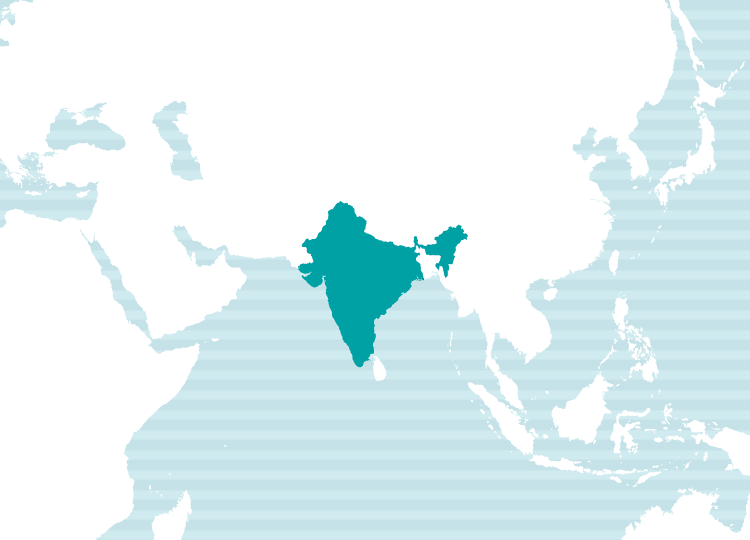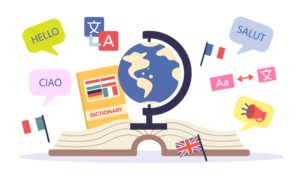India, a multicultural nation with the world's largest population, is home to over 400 languages. While 22 languages are officially recognized as state-level official languages, Hindi is the only designated federal official language of India.
At NAIway Translation Service, we provide high-quality Hindi translations, handled by experienced professionals with expertise in various fields, ensuring accuracy and cultural relevance based on the content and purpose of the translation.
Note:
There are very few Hindi translators, especially for Japanese ⇔ Hindi translations, making it challenging to arrange direct translations. In some cases, we may use English as an intermediary language. We appreciate your understanding.

For more details, please feel free to contact us.
Hindi Translation Rates (Japanese-Hindi & Hindi-Japanese)
Below are NAIway’s standard translation rates.
Our regular translation fees cover all of the following services, so you can rely on us with confidence.
Translation
+
Native-Level Quality Check
+
After-Support※
※ As part of our after-support, we handle revisions and inquiries within the post-delivery verification period (typically one week).
(Please note that changes or additions to the original document are not included.)
Japanese to Hindi Translation

For pricing, please contact us.
Hindi to Japanese Translation

For pricing, please contact us.
- The actual cost will be estimated based on the content and volume of the document. Please send us the document when requesting a quote.
- Minimum Charge Policy. Depending on the character/word count and other conditions, we have a two-tier minimum charge system of 5,500 Japanese Yen or 11,000 Japanese Yen (tax included). This ensures coverage of the essential costs involved in translation coordination and quality assurance.

For more details, please feel free to contact us.
NAIway's Quality Assurance System
At NAIway Translation Service, we believe that quality management is our top priority as a professional translation company. To ensure the highest standards, we have developed our own Quality Assurance System (QAS) and implement strict quality control measures.
For high-quality Japanese-Hindi and Hindi-Japanese translations, every document undergoes a two-step review process: after the initial translation, a second translator conducts a thorough quality check.
We meticulously review each character and sentence, ensuring logical flow, terminology consistency, and appropriate expressions to deliver a refined translation tailored to your needs.

Multilingual Translation Support
At NAIway, we offer multilingual translation services. Along with Hindi, we provide translations in English, Chinese, Thai, Indonesian, and more—all in one place.
If you're considering inbound tourism solutions, feel free to contact us for a consultation!

Introduction to Our Hindi Translators
Here are some of the translators currently working with or registered at NAIway.
For more details, please feel free to contact us.
What is the Hindi language?
Hindi (हिंदी, हिन्दी) is primarily spoken in northern and central India and is recognized as the federal official language of the country. It has incorporated vocabulary from Sanskrit and has also been strongly influenced by Arabic and Persian.
Hindi shares linguistic roots with Urdu, the national language of Pakistan, and the two languages are often mixed in spoken form. Because of their close relationship, they are sometimes collectively referred to as Hindustani.
However, when referring to Hindi, it usually means Standard Hindi, which is the official form used by the Indian government.
The Hindi Script
Hindi uses the Devanagari script, a phonetic writing system.
How to Say “Hello” in Hindi
नमस्ते/nəˈmʌs.teɪ/
Primary Regions of Use

Language Family: Indo-European → Indo-Iranian → Indo-Aryan
Spoken in: India
Hindi Grammar
Hindi follows an SOV (Subject-Object-Verb) word order, similar to Japanese. Some key similarities include:
- Adjectives come before nouns.
- Postpositions (instead of prepositions) follow the noun.
Hindi nouns have grammatical gender (masculine and feminine), and words change their endings based on gender.
Verbs in Hindi fall into two categories:
General verbs: These cover actions like "to do" or "to become" and follow regular conjugation patterns.
Copula verbs: These are verbs like "to be" (e.g., "is," "are") and "to exist" (e.g., "there is," "there are"). They undergo irregular conjugation based on the subject and tense.


